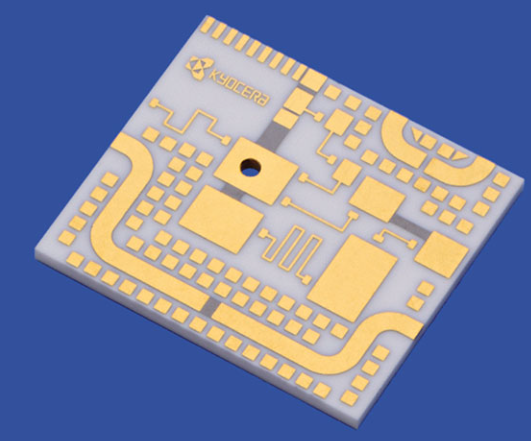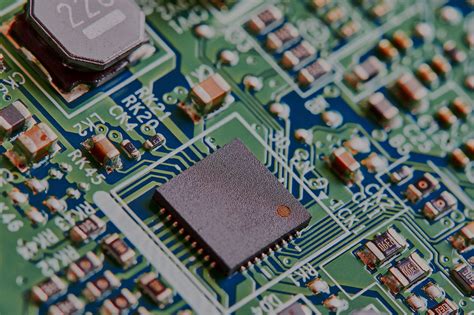Ceramic PCB Boards: Revolutionizing Modern Electronics
Introduction
In the rapidly evolving world of electronics, the demand for high-performance, reliable, and compact printed circuit boards (PCBs) has never been greater. Traditional PCBs, typically made from materials like FR-4, have served the industry well for decades. However, as technology advances and applications become more demanding, the limitations of these conventional materials are becoming increasingly apparent. Enter ceramic PCB boards—a cutting-edge solution that is revolutionizing the electronics industry. This article delves into the world of ceramic PCBs, exploring their unique properties, manufacturing processes, applications, and the advantages they offer over traditional PCB materials.
What are Ceramic PCB Boards?
Ceramic PCB boards are a type of printed circuit board that uses ceramic materials as the substrate instead of the more common FR-4 or other organic materials. The ceramic substrates are typically made from materials such as alumina (Al2O3), aluminum nitride (AlN), or beryllium oxide (BeO). These materials are chosen for their exceptional thermal, electrical, and mechanical properties, which make them ideal for high-performance and high-reliability applications.
Key Properties of Ceramic PCB Boards
- Thermal Conductivity: One of the most significant advantages of ceramic PCBs is their high thermal conductivity. Materials like aluminum nitride (AlN) and beryllium oxide (BeO) have thermal conductivities that are orders of magnitude higher than traditional FR-4. This property allows ceramic PCBs to efficiently dissipate heat, making them ideal for high-power applications where thermal management is critical.
- Electrical Insulation: Ceramic materials are excellent electrical insulators. This property is crucial for PCBs, as it prevents electrical leakage and ensures the integrity of the circuit. The high dielectric strength of ceramics also allows for the creation of PCBs that can operate at higher voltages without risk of breakdown.
- Mechanical Strength: Ceramic substrates are inherently strong and rigid, providing excellent mechanical stability. This makes ceramic PCBs highly resistant to mechanical stress, vibration, and shock, which is particularly important in harsh environments such as aerospace, automotive, and industrial applications.
- Chemical Resistance: Ceramics are highly resistant to chemical corrosion, making them suitable for use in environments where exposure to corrosive substances is a concern. This property extends the lifespan of ceramic PCBs and ensures reliable performance over time.
- Dimensional Stability: Ceramic materials exhibit minimal thermal expansion, which means that ceramic PCBs maintain their dimensional stability even under extreme temperature fluctuations. This is crucial for applications where precise alignment and spacing of components are required.

Manufacturing Process of Ceramic PCB Boards
The manufacturing process of ceramic PCBs differs significantly from that of traditional PCBs due to the unique properties of ceramic materials. The process typically involves the following steps:
- Substrate Preparation: The ceramic substrate is first prepared by mixing ceramic powders with binders and solvents to form a slurry. This slurry is then cast into sheets and dried to form green ceramic sheets.
- Via Formation: Vias, which are small holes that allow electrical connections between different layers of the PCB, are drilled or punched into the green ceramic sheets. These vias are then filled with conductive paste to create electrical pathways.
- Screen Printing: Conductive traces and pads are screen-printed onto the ceramic sheets using conductive inks. These inks are typically made from materials like silver, gold, or copper, which have excellent electrical conductivity.
- Lamination: Multiple layers of ceramic sheets are stacked and laminated together under high pressure and temperature to form a multi-layer ceramic PCB. The lamination process ensures that the layers are firmly bonded together, creating a robust and reliable structure.
- Firing: The laminated ceramic sheets are then fired in a high-temperature kiln. During this process, the binders and solvents are burned off, and the ceramic particles sinter together to form a solid, dense substrate. The conductive traces and vias also undergo sintering, resulting in highly conductive pathways.
- Surface Finishing: After firing, the ceramic PCB undergoes surface finishing processes such as plating or coating to protect the conductive traces and improve solderability. Common surface finishes include gold plating, silver plating, and solder mask application.
- Component Assembly: Finally, electronic components are mounted onto the ceramic PCB using surface-mount technology (SMT) or through-hole technology (THT). The high thermal conductivity of the ceramic substrate allows for efficient heat dissipation during the soldering process, ensuring reliable component attachment.
Applications of Ceramic PCB Boards
The unique properties of ceramic PCBs make them suitable for a wide range of high-performance and high-reliability applications. Some of the key application areas include:
- Power Electronics: Ceramic PCBs are widely used in power electronics, where high thermal conductivity and electrical insulation are critical. Applications include power converters, inverters, motor drives, and high-power LED lighting. The ability of ceramic PCBs to efficiently dissipate heat allows for higher power densities and more compact designs.
- Aerospace and Defense: The aerospace and defense industries demand electronics that can withstand extreme conditions, including high temperatures, vibration, and shock. Ceramic PCBs are ideal for these applications due to their mechanical strength, thermal stability, and resistance to harsh environments. They are used in avionics, radar systems, satellite communications, and missile guidance systems.
- Automotive Electronics: The automotive industry is increasingly adopting ceramic PCBs for applications such as engine control units (ECUs), power modules, and electric vehicle (EV) power electronics. The high thermal conductivity of ceramic PCBs is particularly beneficial in EVs, where efficient heat management is crucial for battery performance and longevity.
- Medical Electronics: Ceramic PCBs are used in medical devices where reliability and precision are paramount. Applications include implantable devices, diagnostic equipment, and high-frequency surgical instruments. The biocompatibility of certain ceramic materials also makes them suitable for use in medical implants.
- Telecommunications: The telecommunications industry relies on ceramic PCBs for high-frequency and high-speed applications. Ceramic substrates provide excellent signal integrity and low dielectric loss, making them ideal for RF and microwave circuits, base stations, and satellite communication systems.
- Industrial Electronics: In industrial settings, ceramic PCBs are used in harsh environments where exposure to high temperatures, chemicals, and mechanical stress is common. Applications include industrial automation, robotics, and process control systems.

Advantages of Ceramic PCB Boards over Traditional PCBs
- Superior Thermal Management: The high thermal conductivity of ceramic PCBs allows for efficient heat dissipation, reducing the risk of overheating and improving the reliability of electronic components. This is particularly important in high-power applications where traditional PCBs would struggle to manage heat effectively.
- Enhanced Electrical Performance: Ceramic PCBs offer superior electrical insulation and low dielectric loss, making them ideal for high-frequency and high-speed applications. The high dielectric strength of ceramics also allows for operation at higher voltages without risk of electrical breakdown.
- Mechanical Durability: The inherent strength and rigidity of ceramic materials make ceramic PCBs highly resistant to mechanical stress, vibration, and shock. This durability is crucial for applications in harsh environments where traditional PCBs would be prone to failure.
- Chemical Resistance: Ceramic PCBs are highly resistant to chemical corrosion, making them suitable for use in environments where exposure to corrosive substances is a concern. This property extends the lifespan of ceramic PCBs and ensures reliable performance over time.
- Miniaturization: The excellent thermal and electrical properties of ceramic PCBs allow for the design of more compact and lightweight electronic devices. This is particularly important in industries such as aerospace and medical electronics, where space and weight are at a premium.
- High Reliability: The combination of thermal stability, mechanical strength, and chemical resistance makes ceramic PCBs highly reliable, even in the most demanding applications. This reliability translates to reduced maintenance costs and longer service life for electronic devices.
Challenges and Considerations
While ceramic PCBs offer numerous advantages, there are also some challenges and considerations to keep in mind:
- Cost: Ceramic PCBs are generally more expensive to manufacture than traditional PCBs due to the cost of ceramic materials and the specialized manufacturing processes involved. However, the higher cost is often justified by the superior performance and reliability of ceramic PCBs in demanding applications.
- Fragility: While ceramic materials are strong and rigid, they can also be brittle and prone to cracking under mechanical stress. Care must be taken during handling and assembly to avoid damaging the ceramic substrate.
- Design Complexity: The manufacturing process for ceramic PCBs is more complex than that of traditional PCBs, requiring specialized equipment and expertise. Designers must also consider the unique properties of ceramic materials when designing circuits to ensure optimal performance.
- Limited Availability: Ceramic PCBs are not as widely available as traditional PCBs, and sourcing them may require working with specialized manufacturers. This can lead to longer lead times and higher costs.
Future Trends in Ceramic PCB Technology
As the demand for high-performance electronics continues to grow, the use of ceramic PCBs is expected to increase. Several trends are likely to shape the future of ceramic PCB technology:
- Advancements in Material Science: Ongoing research in material science is expected to lead to the development of new ceramic materials with even better thermal, electrical, and mechanical properties. These advancements will further enhance the performance and reliability of ceramic PCBs.
- Increased Adoption in Emerging Technologies: As emerging technologies such as 5G, IoT, and electric vehicles continue to evolve, the demand for ceramic PCBs is expected to grow. These technologies require high-performance electronics that can operate reliably in challenging environments, making ceramic PCBs an ideal choice.
- Improved Manufacturing Techniques: Advances in manufacturing techniques, such as additive manufacturing (3D printing), are expected to reduce the cost and complexity of producing ceramic PCBs. These improvements will make ceramic PCBs more accessible to a wider range of applications.
- Integration with Other Advanced Technologies: Ceramic PCBs are likely to be integrated with other advanced technologies, such as flexible electronics and embedded components, to create even more compact and high-performance electronic devices.

Conclusion
Ceramic PCB boards represent a significant advancement in the field of electronics, offering superior thermal management, electrical performance, and mechanical durability compared to traditional PCB materials. While they come with certain challenges, such as higher cost and design complexity, the benefits they provide make them an ideal choice for high-performance and high-reliability applications. As technology continues to advance, the use of ceramic PCBs is expected to grow, driving innovation and enabling the development of next-generation electronic devices. Whether in power electronics, aerospace, automotive, medical, or telecommunications, ceramic PCBs are poised to play a crucial role in shaping the future of electronics.







